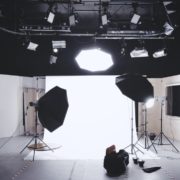
The concept of web design has become increasingly accessible throughout the digital age. A growing number of sole traders and startup entrepreneurs are now looking to reduce launch costs by building their own site.
What’s more, the range of designs and responsive website themes available to business owners is continuing to diversify with every passing year, enabling you to build professional sites that are both stylish and functional.
But what are the most dominant website design trends to keep in mind in 2022? Here’s our pick of the most important and influential trends!
Dark Design and the Return of Retro Fonts
Let’s start with the basics, as it’s thought that 94% of all website complaints are centred on design issues.
In recent times, the use of white space has been central to most contemporary and successful website designs, but it may well be that this trend may be about to reverse as we enter 2022.
More specifically, dark design trends are becoming increasingly popular online, referring to a style where a design can be switched from a white or light background to a grey or black alternative.
Interestingly, this change is being driven by web apps, systems and software developers, whose users and clients are increasingly inclined to request dark design iterations for improved functionality and superior ease of use.
As a result, web design platforms will empower users who want to switch seamlessly between light and dark designs, in the same way, that most software and mobile apps are able to. This contributes to a more agile and functional design and allows brands to create a more holistic visual approach across both desktop and web apps.
Of course, dark design poses many unique challenges, especially when you consider colour palettes and the impact that contrasting shades have on the typical user experience.
So, you’ll need to test and review your web design to ensure that it passes accessibility checks for colour contrast or risk undermining the core benefits of your website’s aesthetic appearance.
Typography also plays a key role in developing effective website designs. It’s interesting to note that brands are increasingly turning to old-school and retro fonts to create an emotional connection between customers and your content.
While the use of retro and vintage fonts may not be considered as one of the newest trends in typography, we’re certainly seeing it gather significant momentum as time goes by. Many of the vintage fonts in use today are also being updated and reimagined for the digital age, largely through the process of stylisation and unique examples of artistry.
This can help you optimise your content’s aesthetic quality while also creating an emotive hook to help engage your target audience, many of whom may be drawn to nostalgic and vintage examples of typography that prompt positive recollections of their youth.
Horizontal Scrolling is Making a Comeback
In the formative days of web design, the concept of horizontal scrolling was considered to be something of a faux pas.
Certainly, creating a site or program with the capacity to scroll horizontally using the window scroll bar used to be deemed unnecessary, but 2021 is the year where this perception could well begin to change.
In fact, we’re already seeing a growing number of web designers experiment with a horizontal scroll, which creates a unique and compelling aesthetic that creates a point of difference compared to other websites.
However, the primary reason for embracing horizontal scrolling is to disclose secondary information progressively and practically, similar to how pictures can be browsed within an image gallery.
If you do intend to utilise a horizontal scroll for this type of purpose in 2022, you’ll need to keep a couple of practical points in mind.
Firstly, your design mustn’t force users to navigate through content horizontally, as the scroll should be one of several ways through which individuals can browse the site. Other options can include clear labels and arrow buttons, but the important thing is to present users with an agile and customisable navigation experience.
We’d also recommend that you avoid using horizontal scrolls for the important text that needs to be read, while utilising clear visual cues to indicate where this type of scroll is accessible.
If you decide that some content is unimportant enough to be accessed by a horizontal scroll, you may want to question whether this needs to be on your site at all!
The Increased Use of 3D Visuals and Design Elements
Not only has the use of multimedia content become increasingly popular in the field of web design, but 3D visuals are also increasingly utilised to bring websites to life.
This is an increasingly popular option as higher resolution screens become more widespread, which have ensured that 3D designs and content have travelled a long way from the blocky and bevelled edges of Geocities.
The modern trend is integrating high-quality 3D visuals seamlessly into multimedia web designs rather than including standalone and garish distractions. As a result, they’re more inclined to add to users’ overall navigation experience, rather than detracting from this and diminishing website load speeds.
Yaya’s website offers a relevant case in point, with the resource’s homepage adopting a minimalist design that puts a quirky hero animation at the front and centre.
A lot of other websites like this one focused on furnace repair in Toronto could stand to benefit from this growing trend.
This helps provide a visual representation of the brand’s service, adding a unique dimension to the content without distracting from the primary or secondary messaging.
Ultimately, there can be no doubt that this ethos perfectly embodies the way in which 3D elements can be used to enhance website designs.
They definitely introduce a unique sense of personality and interactivity to any landing page. This can prove crucial when looking to engage customers, reduce bounce rates and set yourself apart from your closest market rivals.

